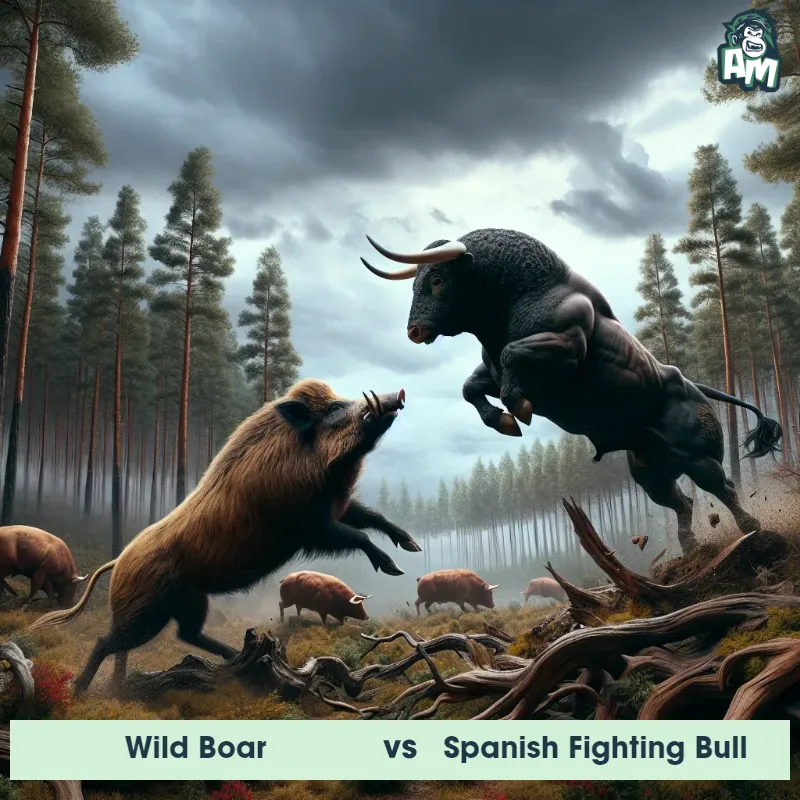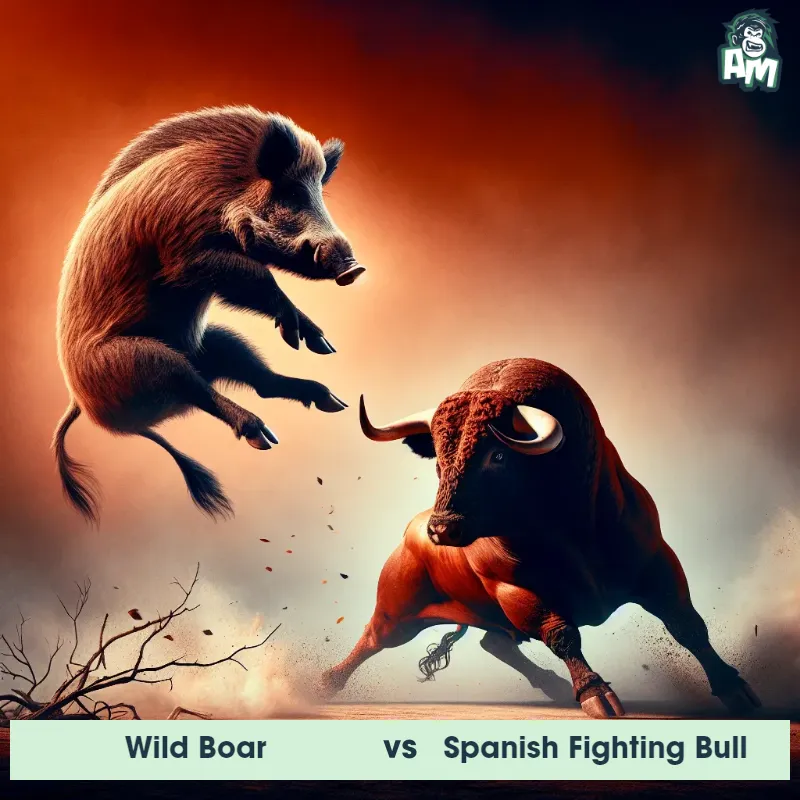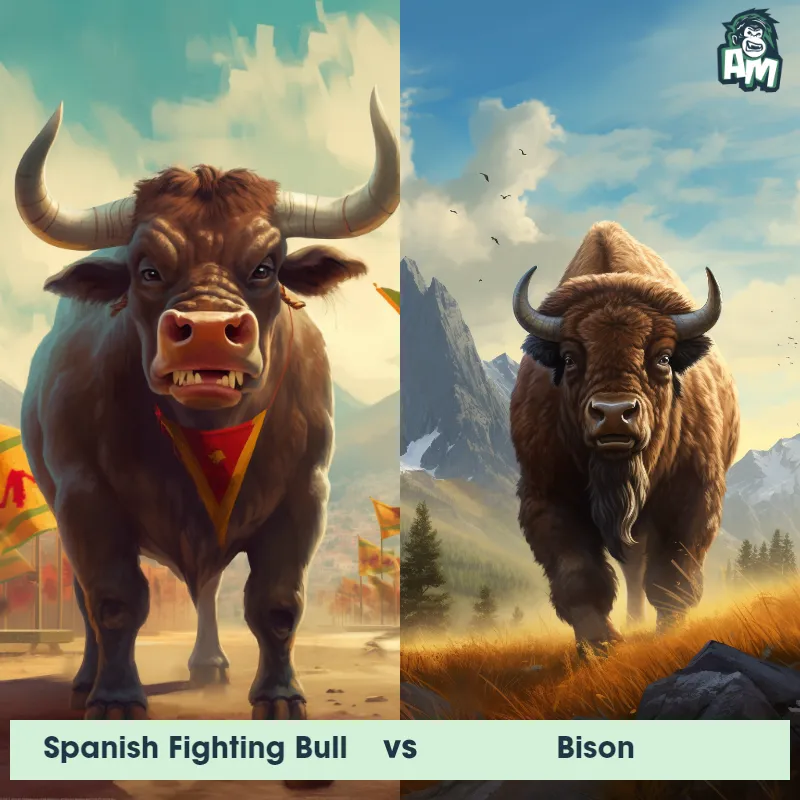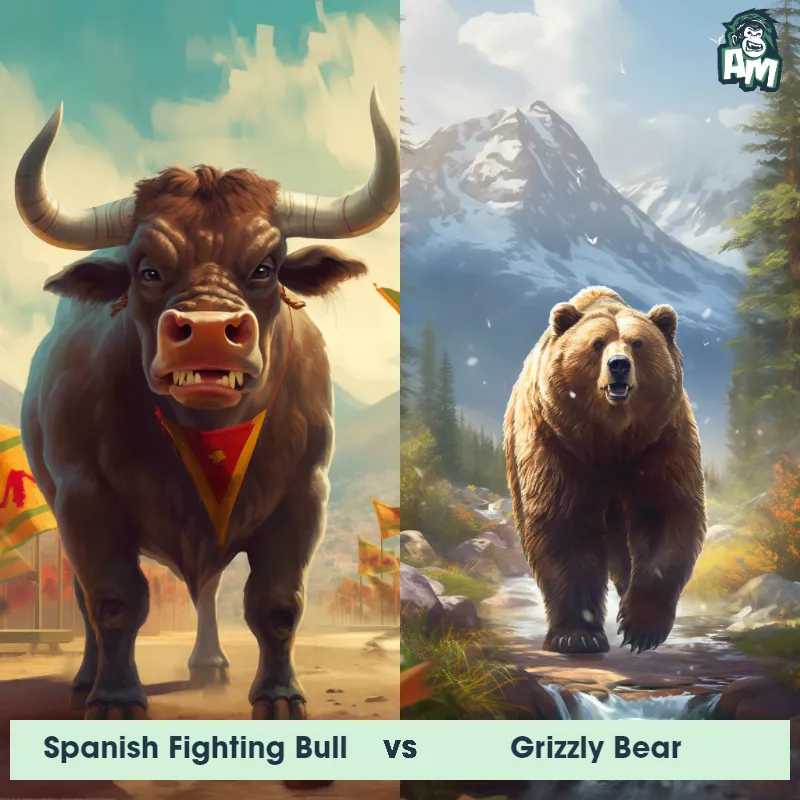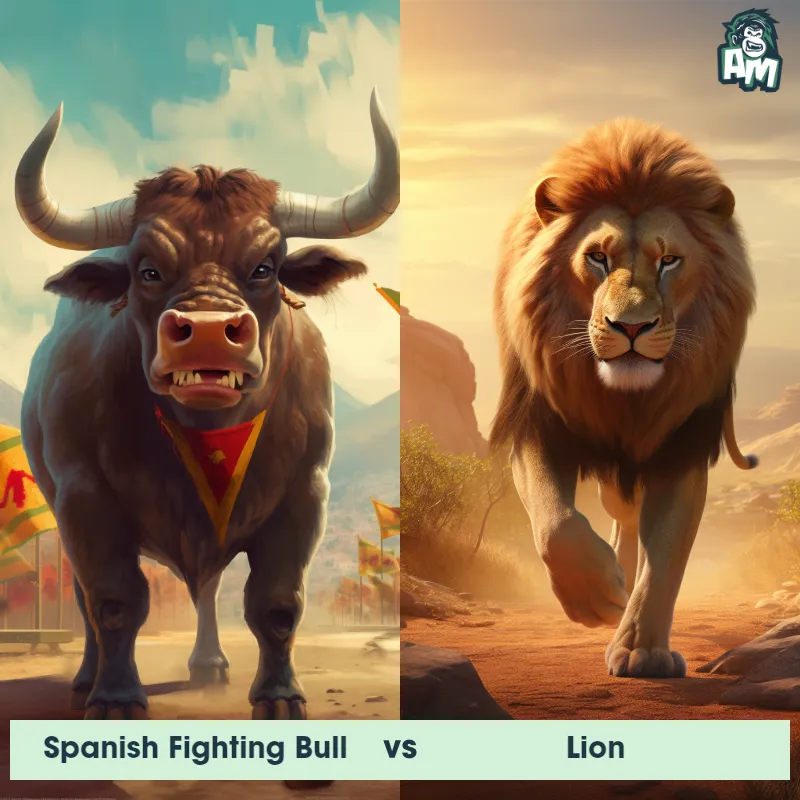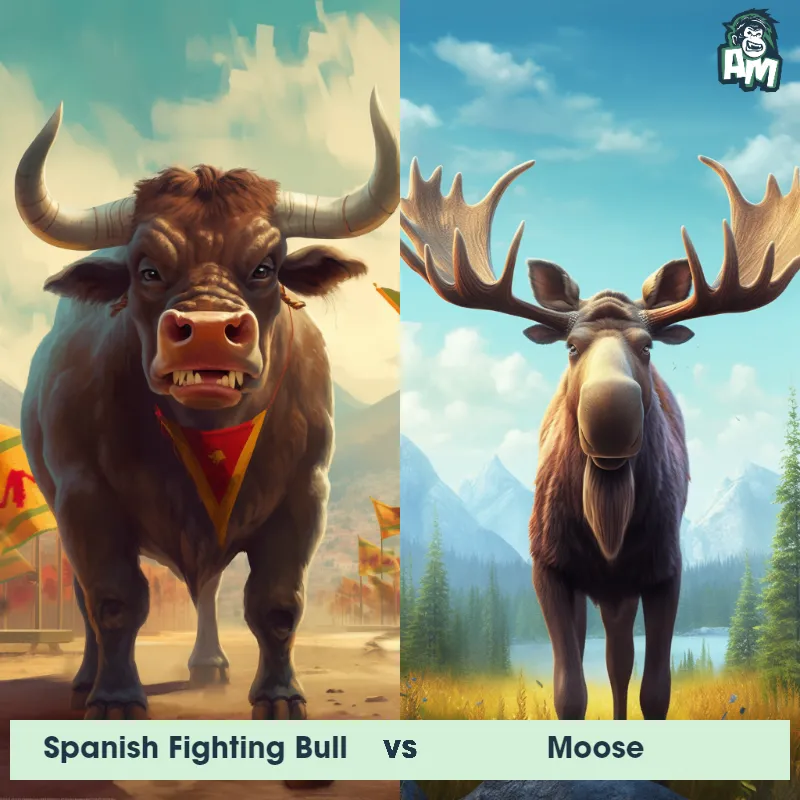The Spanish Fighting Bull
The Spanish Fighting Bull, also known as Toro Bravo, is a breed of cattle native to Spain. These bulls are well-known for their aggressive temperament, muscular build, and impressive horns. They have a broad and powerful chest, a short and thick neck, and a robust body with strong hindquarters. Their coloring can vary, but they commonly have a dark brown coat. Spanish Fighting Bulls are bred for their strength, stamina, and agility, making them a formidable opponent in bullfighting arenas.
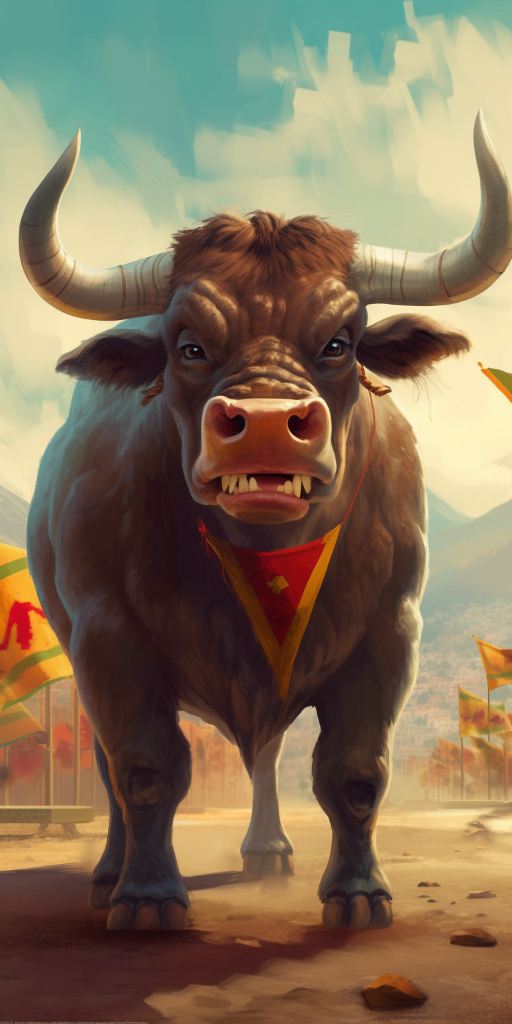
| Spanish Fighting Bull | |
|---|---|
| Size | 4.5-5.5 feet (1.4-1.7 meters) at the shoulder |
| Weight | 1,100-1,500 pounds (500-700 kilograms) |
| Speed | Speed: 35 mph (56.3 km/hr) |
| Key Strength | Aggressiveness and agility |
| Biggest Weakness | Vulnerability to certain matador techniques |
| Scientific Name | Bos taurus |
| Family | Bovidae |
| Habitat | Grasslands and open forests |
| Geography | Spain and Portugal |
| Diet | Grasses and grains |
| Lifespan | 5 years - 6 years |

The Spanish Fighting Bull
The Spanish Fighting Bull, also known as Toro Bravo, is a breed of cattle native to Spain. These bulls are well-known for their aggressive temperament, muscular build, and impressive horns. They have a broad and powerful chest, a short and thick neck, and a robust body with strong hindquarters. Their coloring can vary, but they commonly have a dark brown coat. Spanish Fighting Bulls are bred for their strength, stamina, and agility, making them a formidable opponent in bullfighting arenas.
Fun Fact: Spanish Fighting Bulls are known for their exceptional fighting skills and are highly revered in the tradition of bullfighting.
| Spanish Fighting Bull | |
|---|---|
| Size | 4.5-5.5 feet (1.4-1.7 meters) at the shoulder |
| Weight | 1,100-1,500 pounds (500-700 kilograms) |
| Speed | Speed: 35 mph (56.3 km/hr) |
| Key Strength | Aggressiveness and agility |
| Biggest Weakness | Vulnerability to certain matador techniques |
| Scientific Name | Bos taurus |
| Family | Bovidae |
| Habitat | Grasslands and open forests |
| Geography | Spain and Portugal |
| Diet | Grasses and grains |
| Lifespan | 5 years - 6 years |
Match Highlights
Spanish Fighting Bull Matchups
We use AI to simulate matchups between the Spanish Fighting Bull and other animals. Our simulation considers size, strength, and natural predatory behaviors to determine the most likely outcome.
Spanish Fighting Bull: Diet, Predators, Aggression, and Defensive Behaviors
What do Spanish Fighting Bulls eat?
Spanish Fighting Bulls primarily feed on a diet of grass, hay, and grains. They are also supplemented with minerals and vitamins to ensure they maintain optimal health and strength. These bulls are not picky eaters and have strong digestive systems, allowing them to thrive on a varied diet.
Do Spanish Fighting Bulls have any predators?
In their natural habitat, Spanish Fighting Bulls do not have any predators due to their large size and powerful build. However, they are at risk of predation by large carnivores such as bears and wolves if they were to wander into areas where such predators are present.
Are Spanish Fighting Bulls aggressive?
Spanish Fighting Bulls are known for their aggressive and territorial nature. They can display aggression towards humans and other animals, especially when they feel threatened or provoked. Their aggression is an essential trait that makes them suitable for bullfighting events where their strength and power are showcased.
Do Spanish Fighting Bulls actively engage in fights?
Spanish Fighting Bulls are bred specifically for bullfighting events where they engage in combat with matadors. These bulls exhibit their natural fighting instincts during these events, charging at the matador with great intensity and determination. Their ability to fight fiercely is a key characteristic that sets them apart from other breeds.
How do Spanish Fighting Bulls defend themselves?
Spanish Fighting Bulls rely on their physical attributes such as horns, strength, and speed to defend themselves against perceived threats. When faced with danger, they will use their horns to intimidate or attack potential predators or adversaries. Additionally, their aggressive behavior serves as a natural defense mechanism in threatening situations.
What is the biggest weakness of Spanish Fighting Bulls in a fight?
Despite their strength and aggression, the biggest weakness of Spanish Fighting Bulls in a fight is their predictability. Their fighting style often follows a pattern, allowing experienced matadors to anticipate their movements and maneuvers. This predictability can be exploited by the matador to gain an advantage in the bullfight, ultimately leading to the downfall of the bull.
Fun Fact: Contrary to popular belief, Spanish Fighting Bulls are not killed directly in the bullfighting ring. Instead, after the bull has demonstrated its bravery and the matadors have performed their trials, it is typically removed from the ring to be spared and used for breeding or as a symbol of honor.
Fun Fact: Spanish Fighting Bulls possess an astonishing sense of danger and can quickly identify any sudden or subtle movements, making them incredibly responsive and challenging opponents for matadors.



